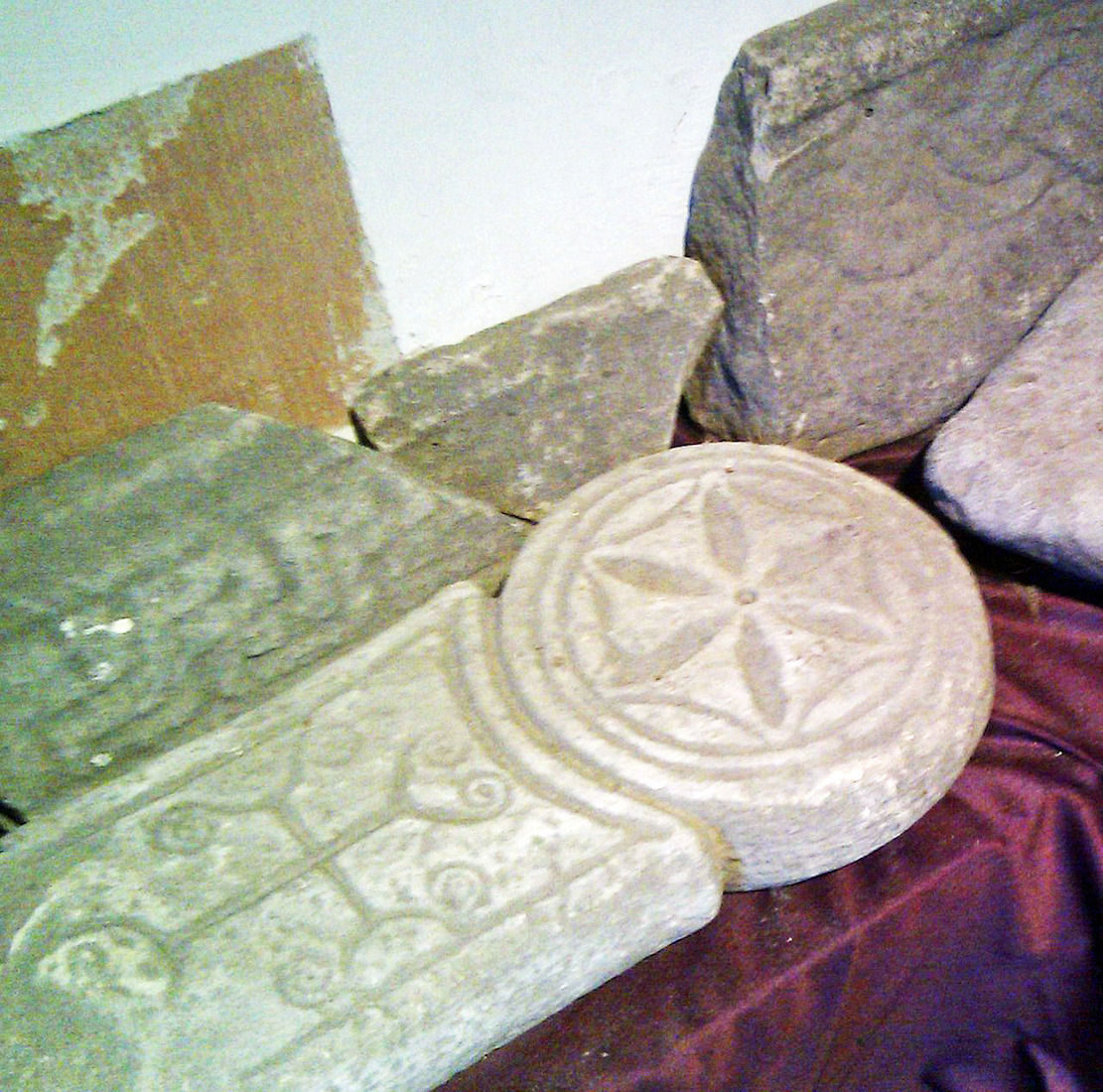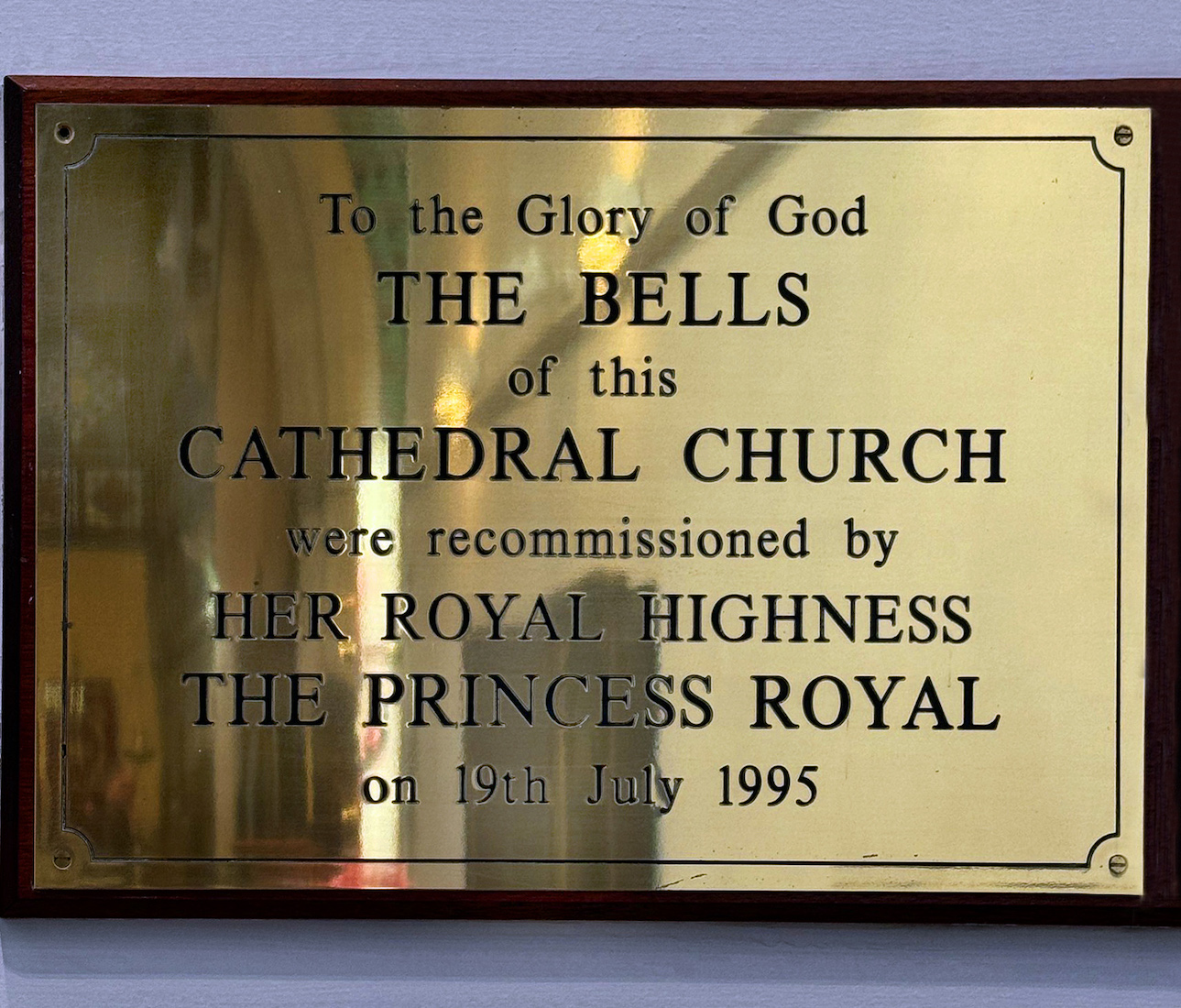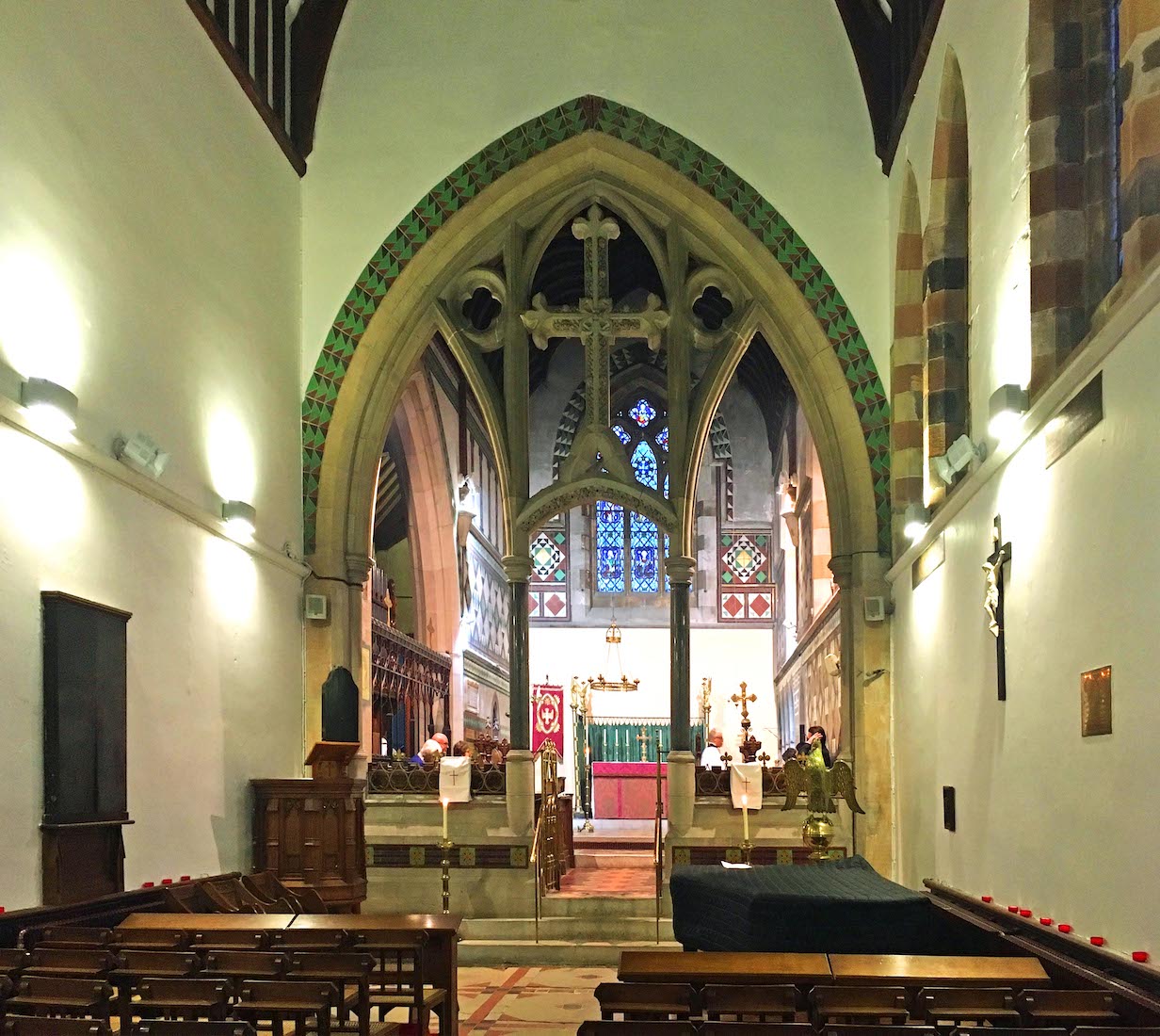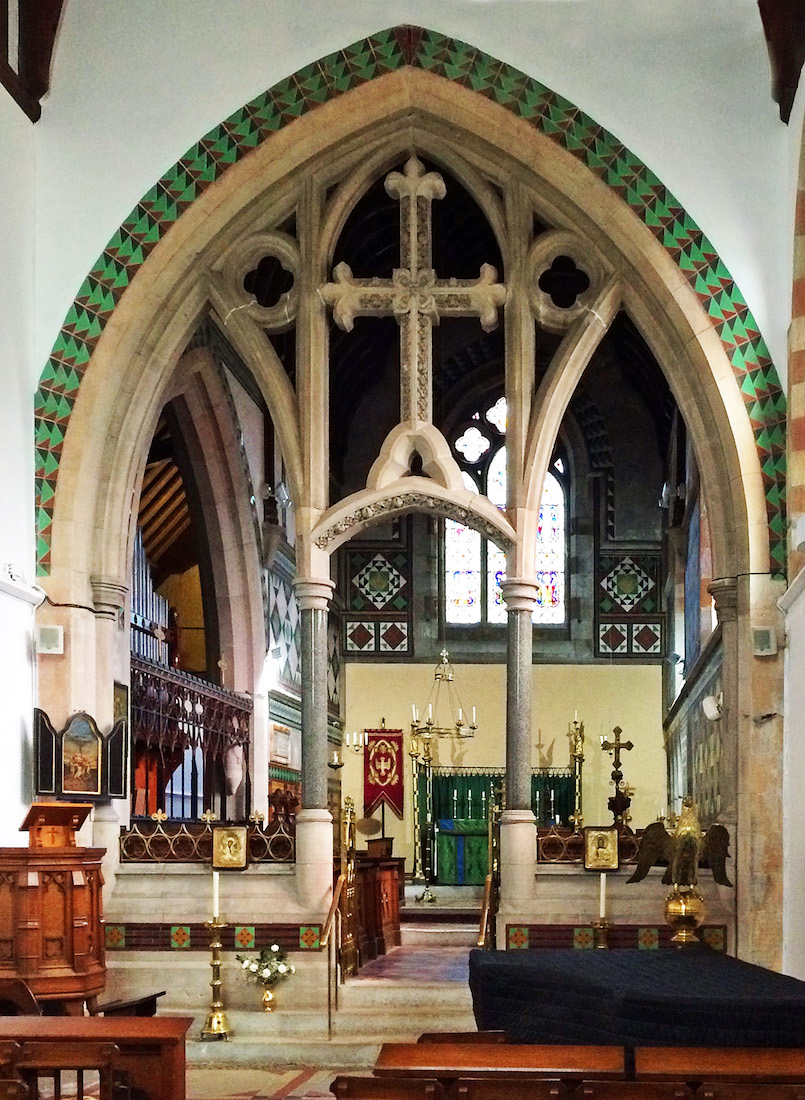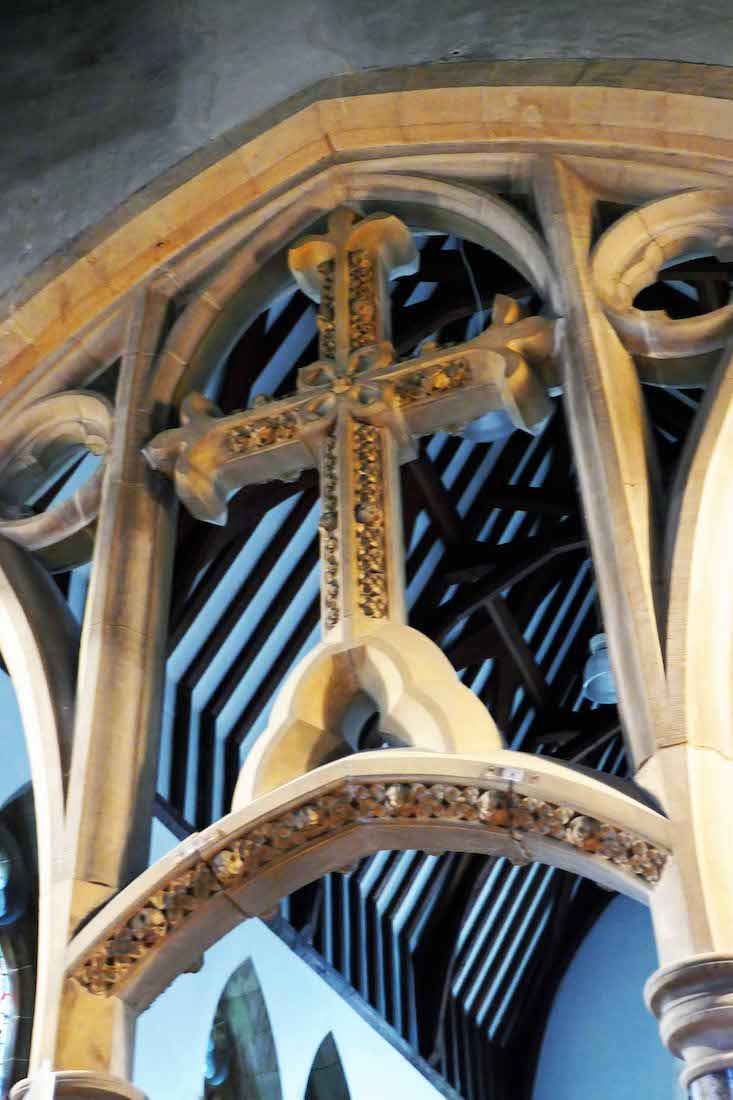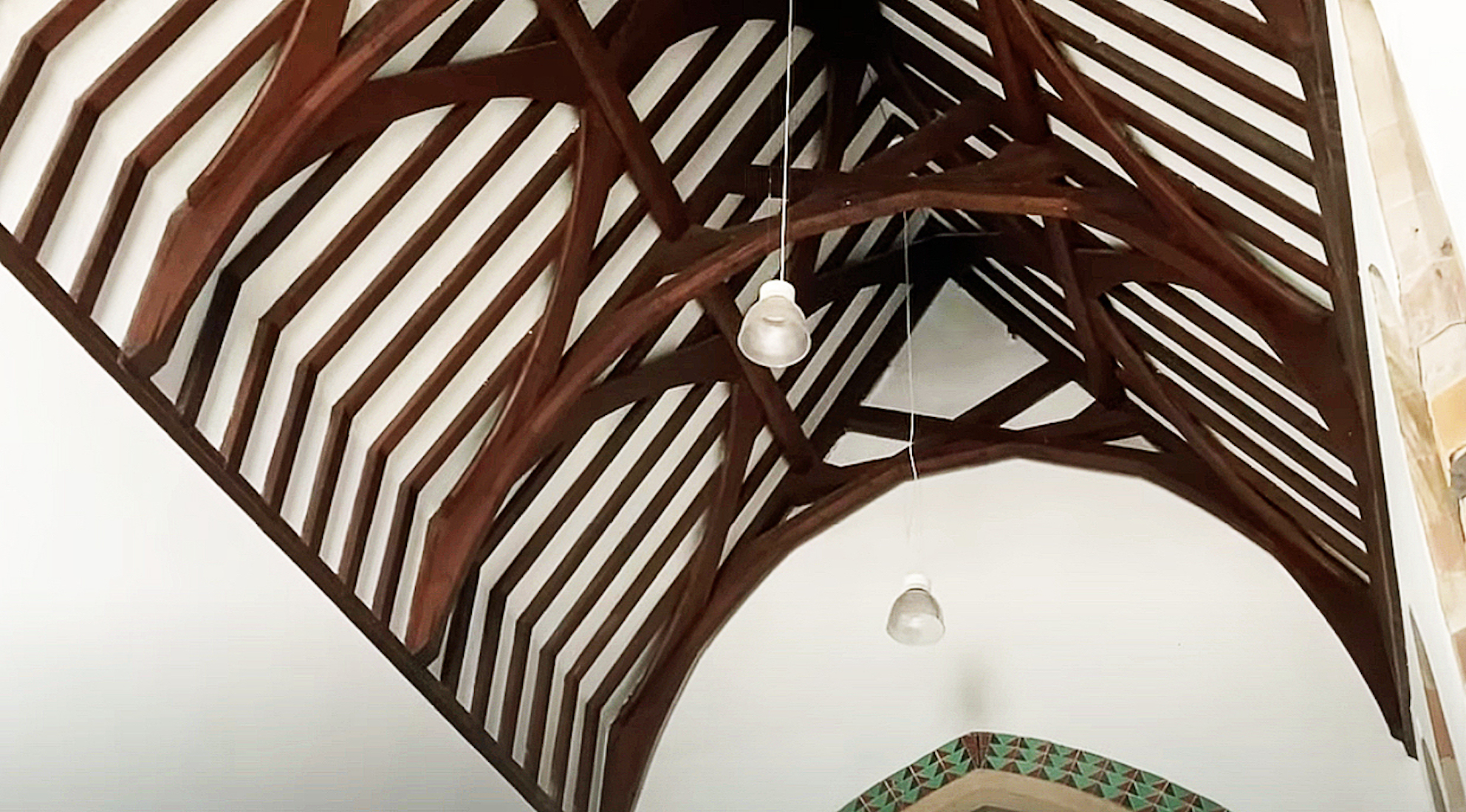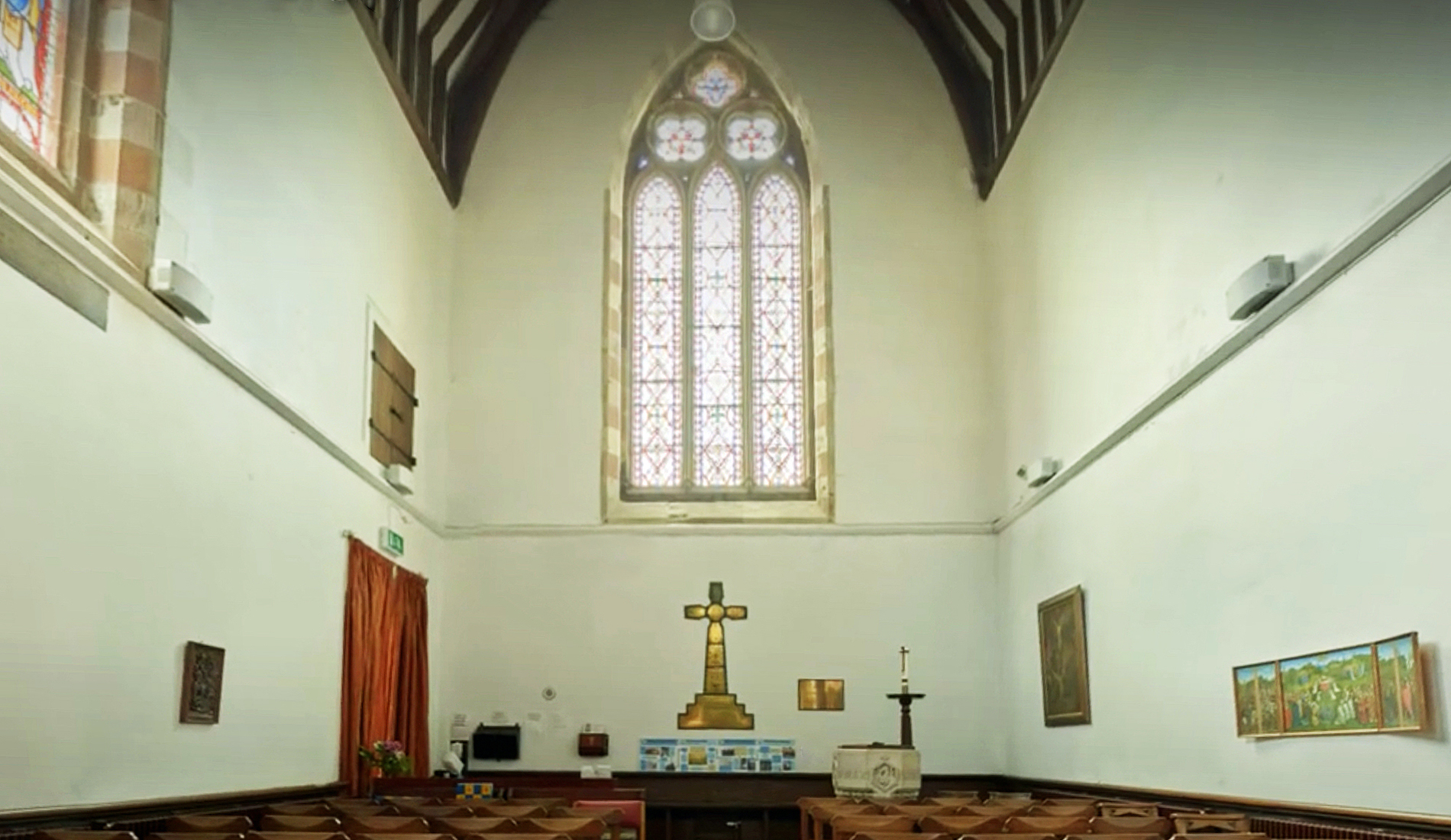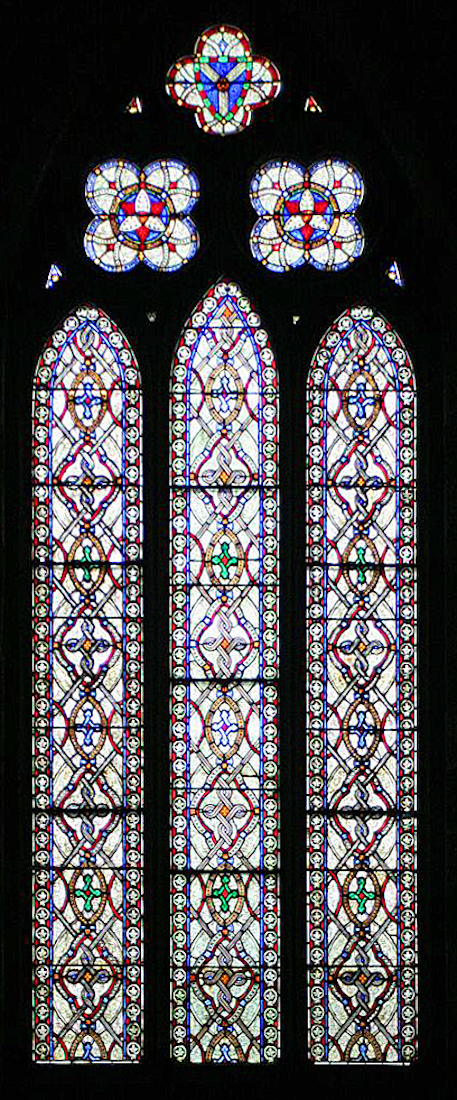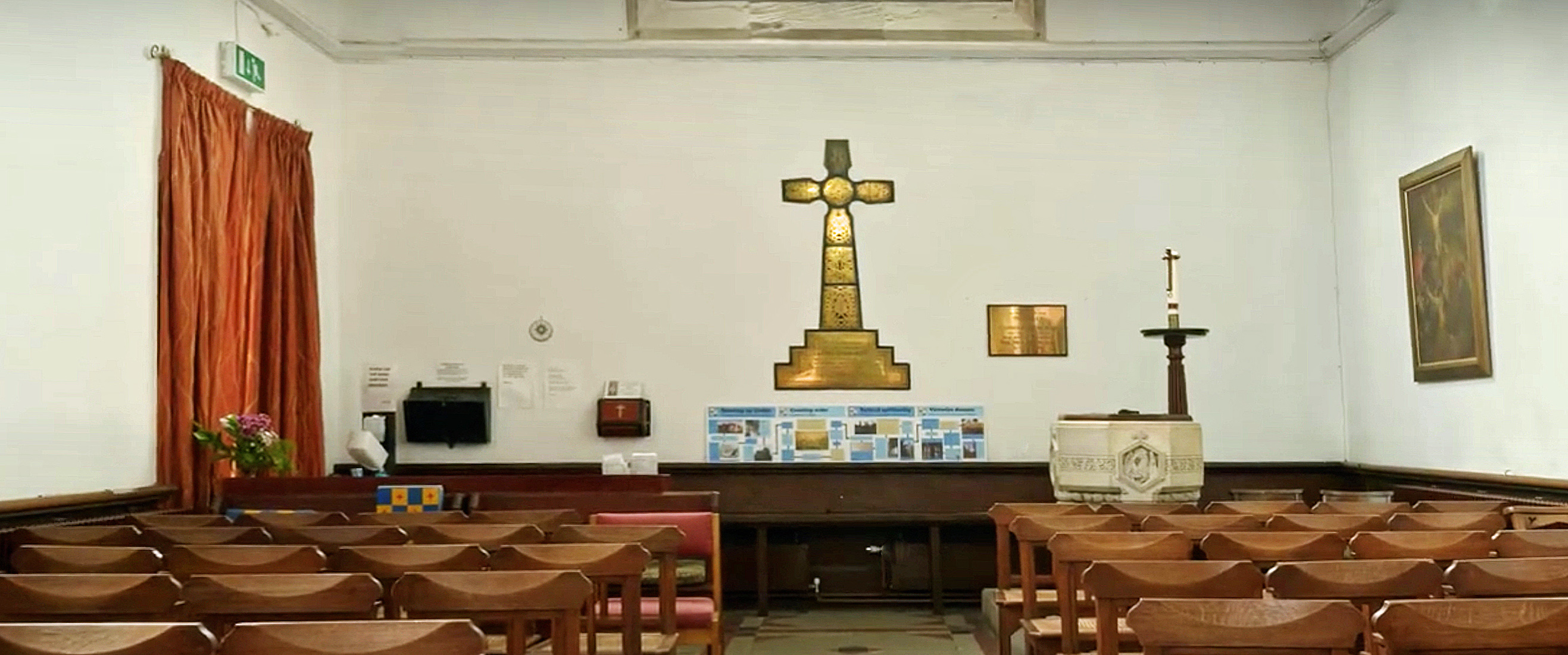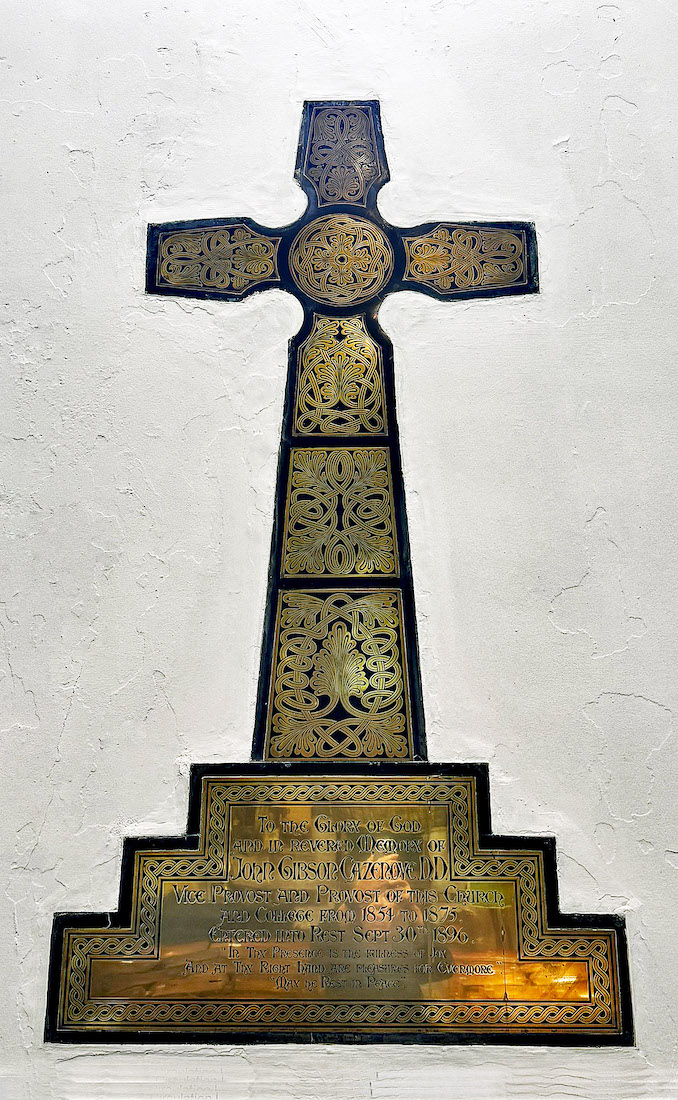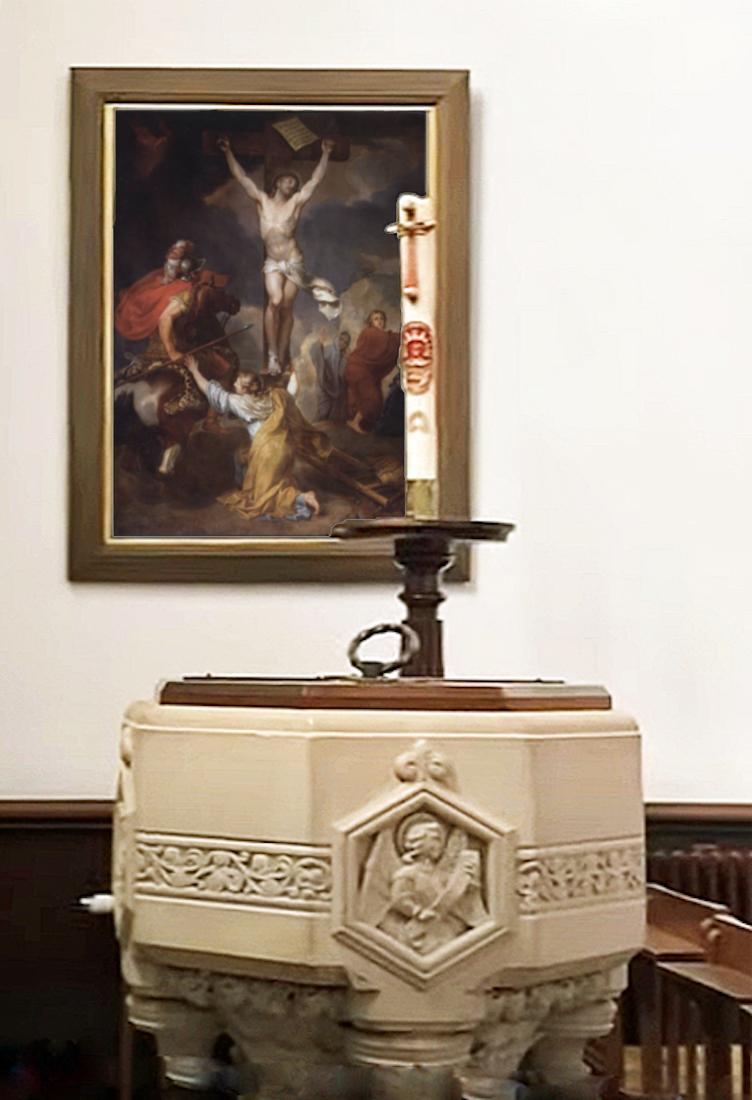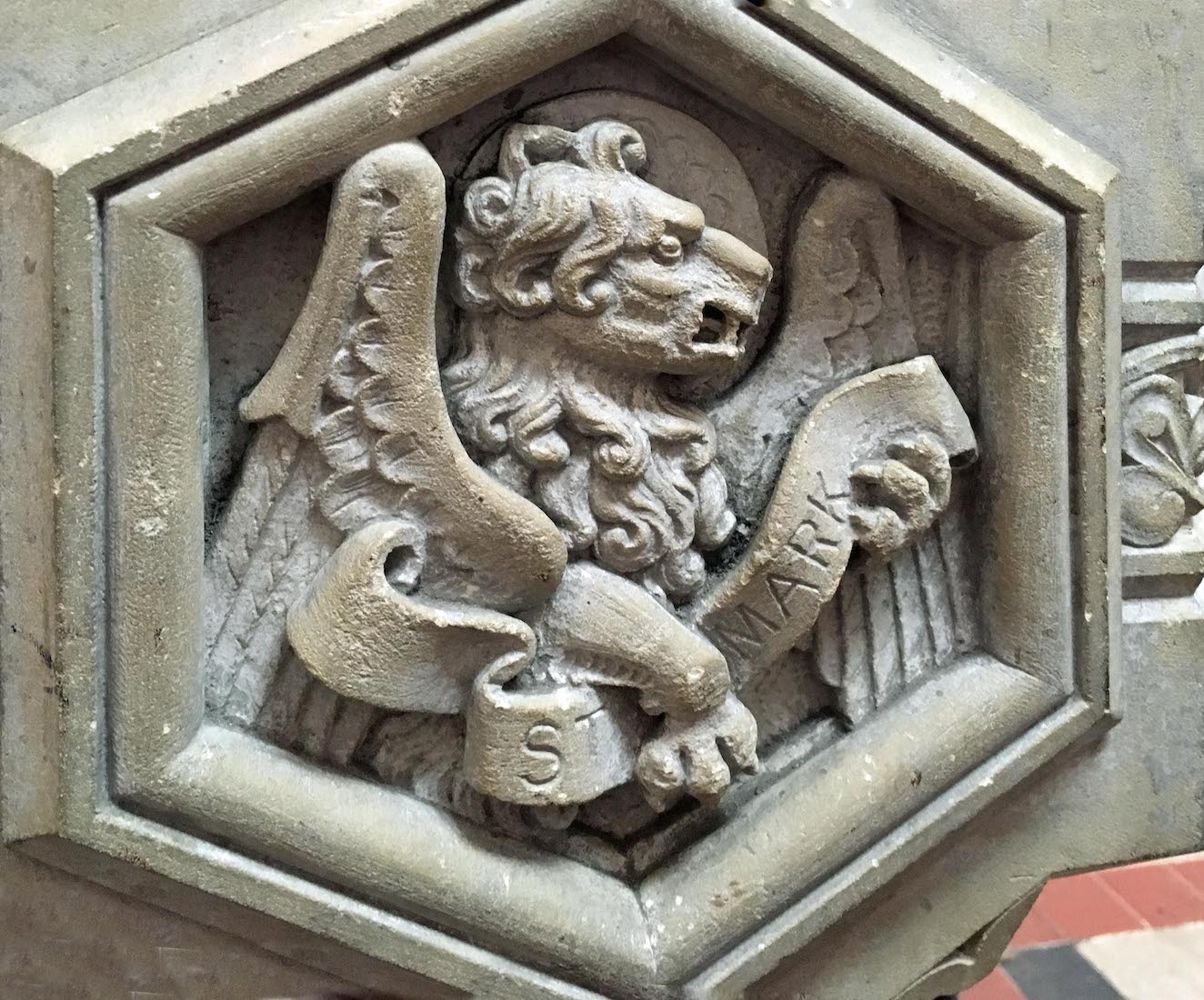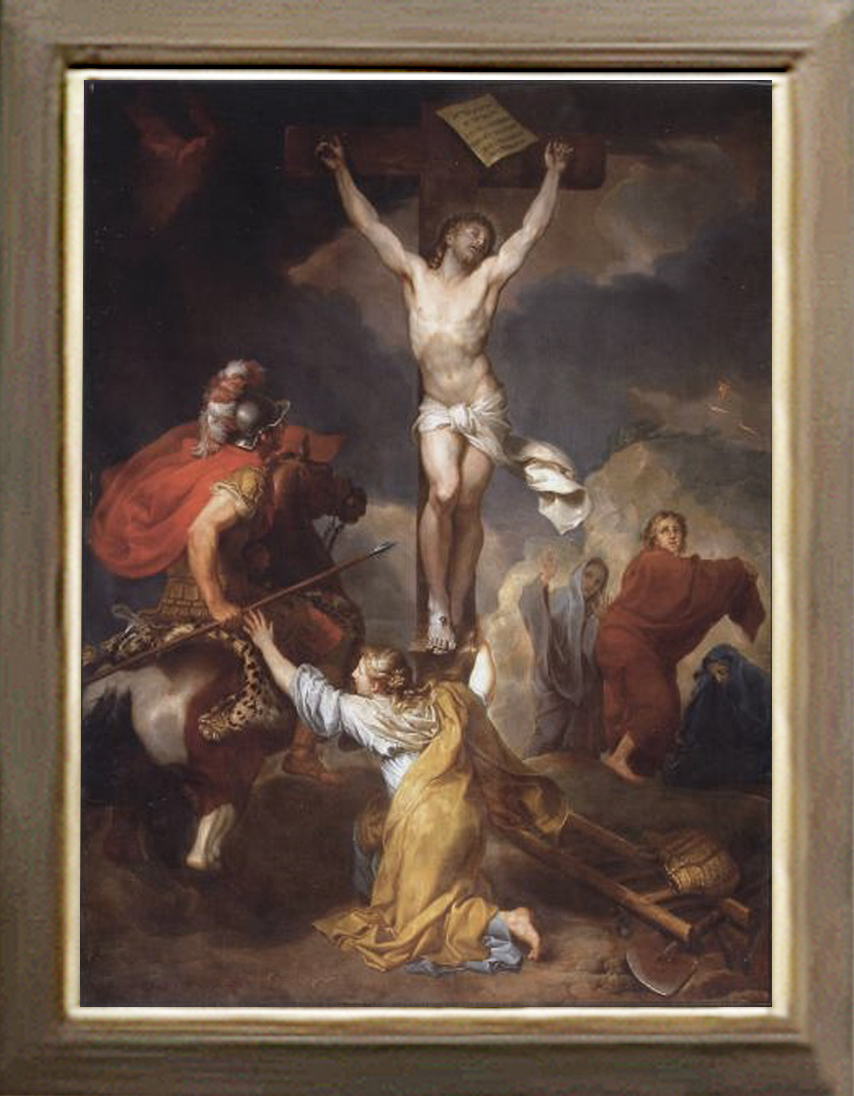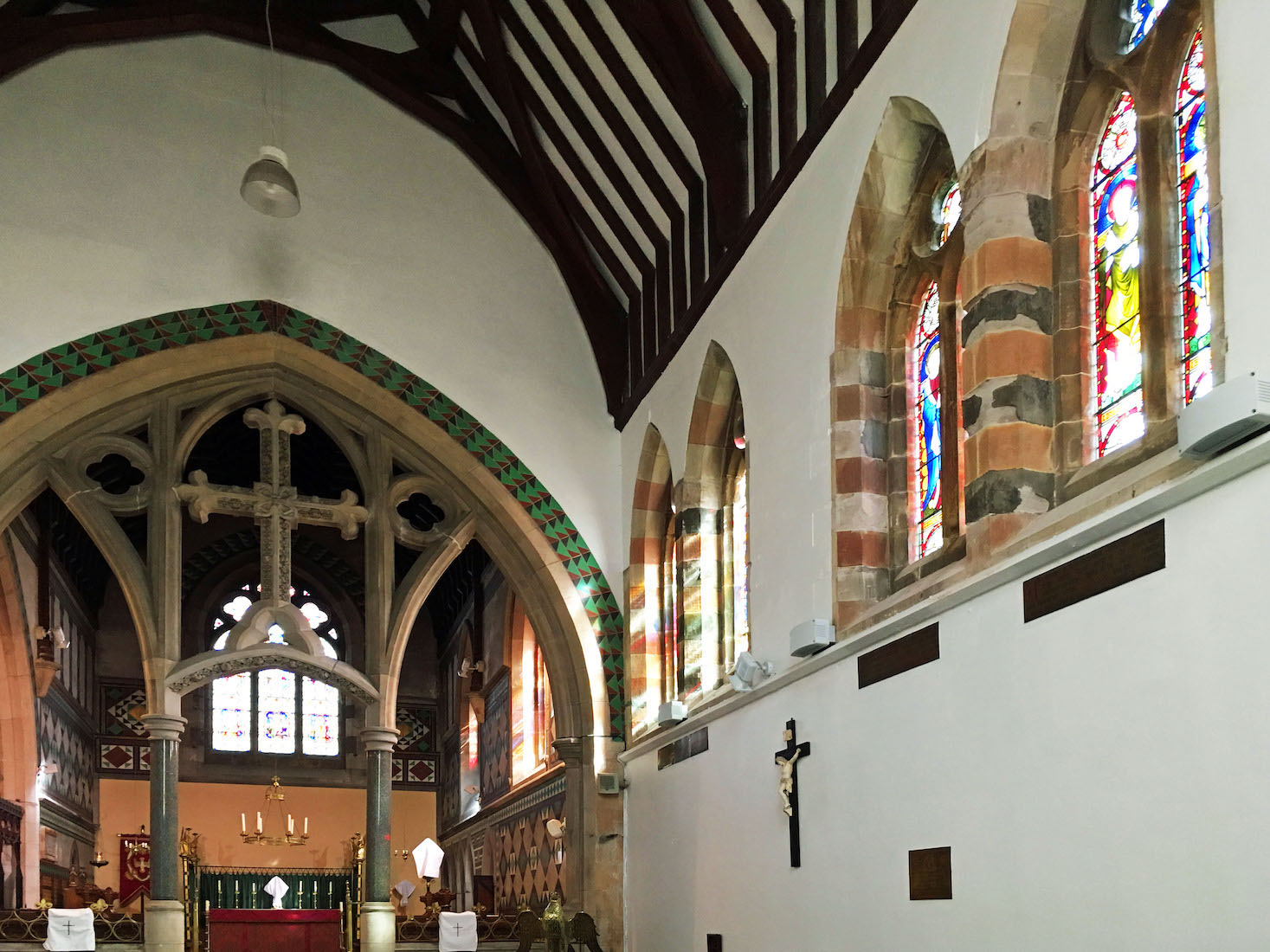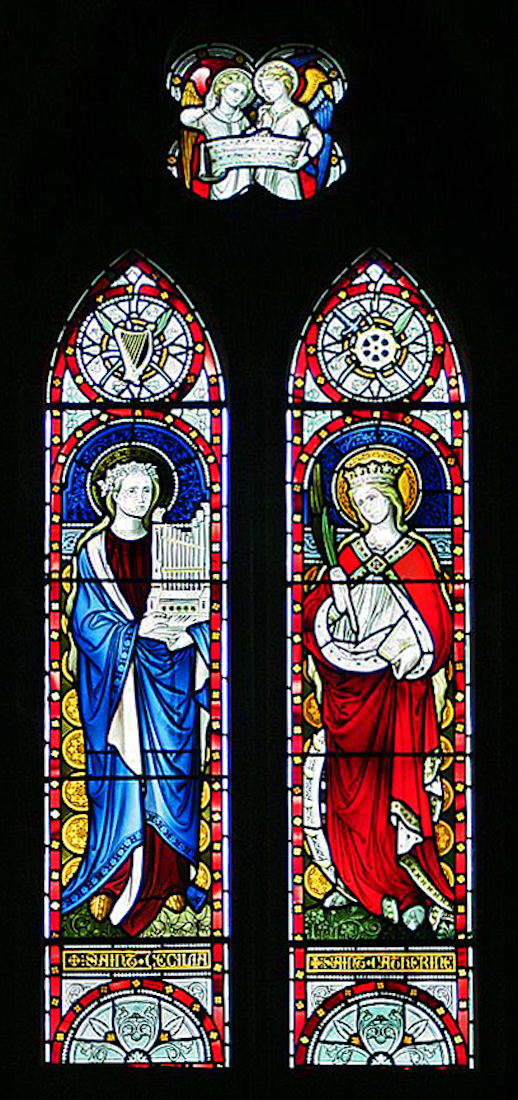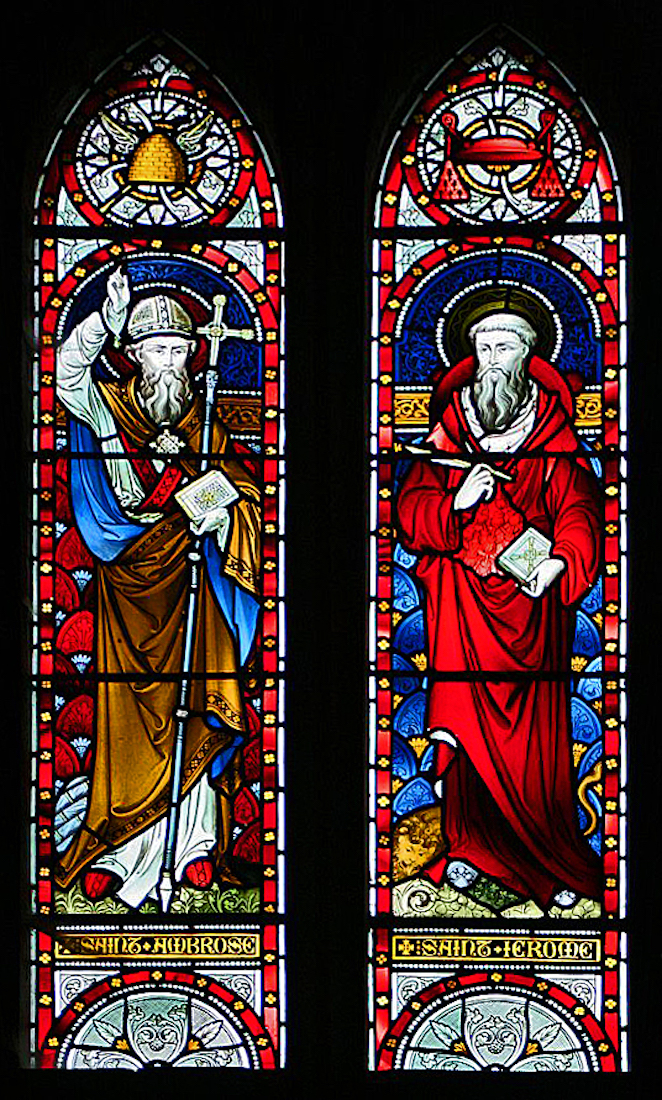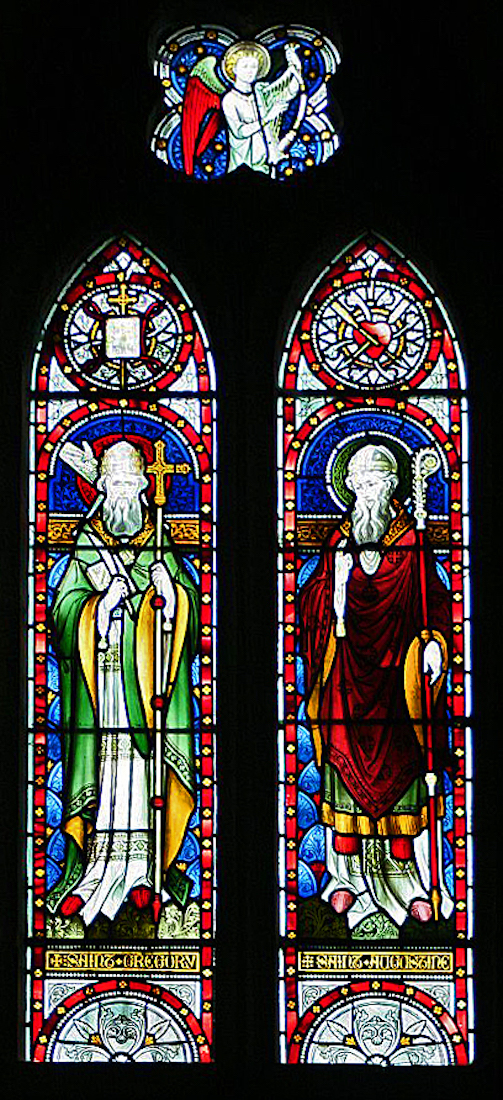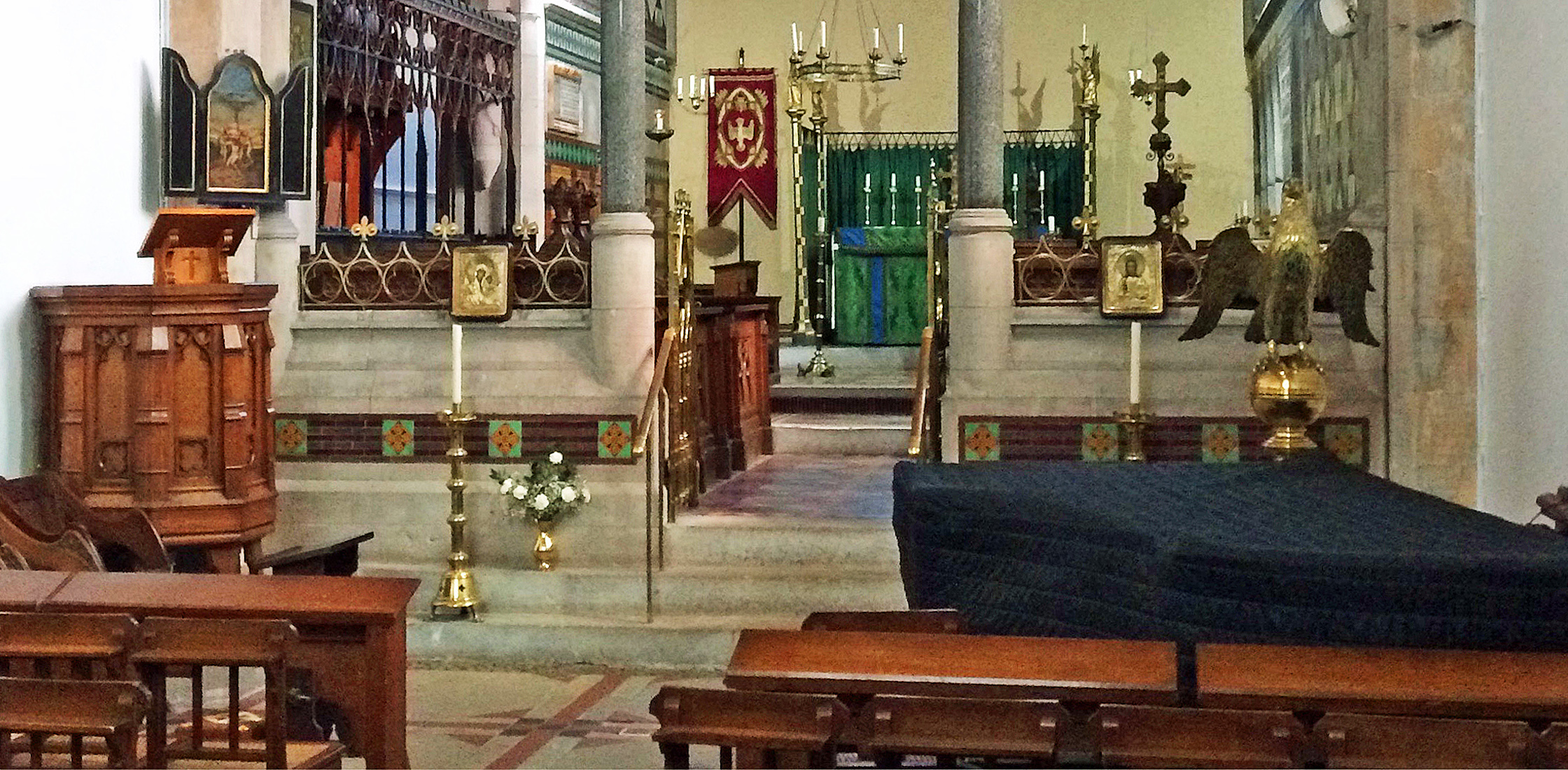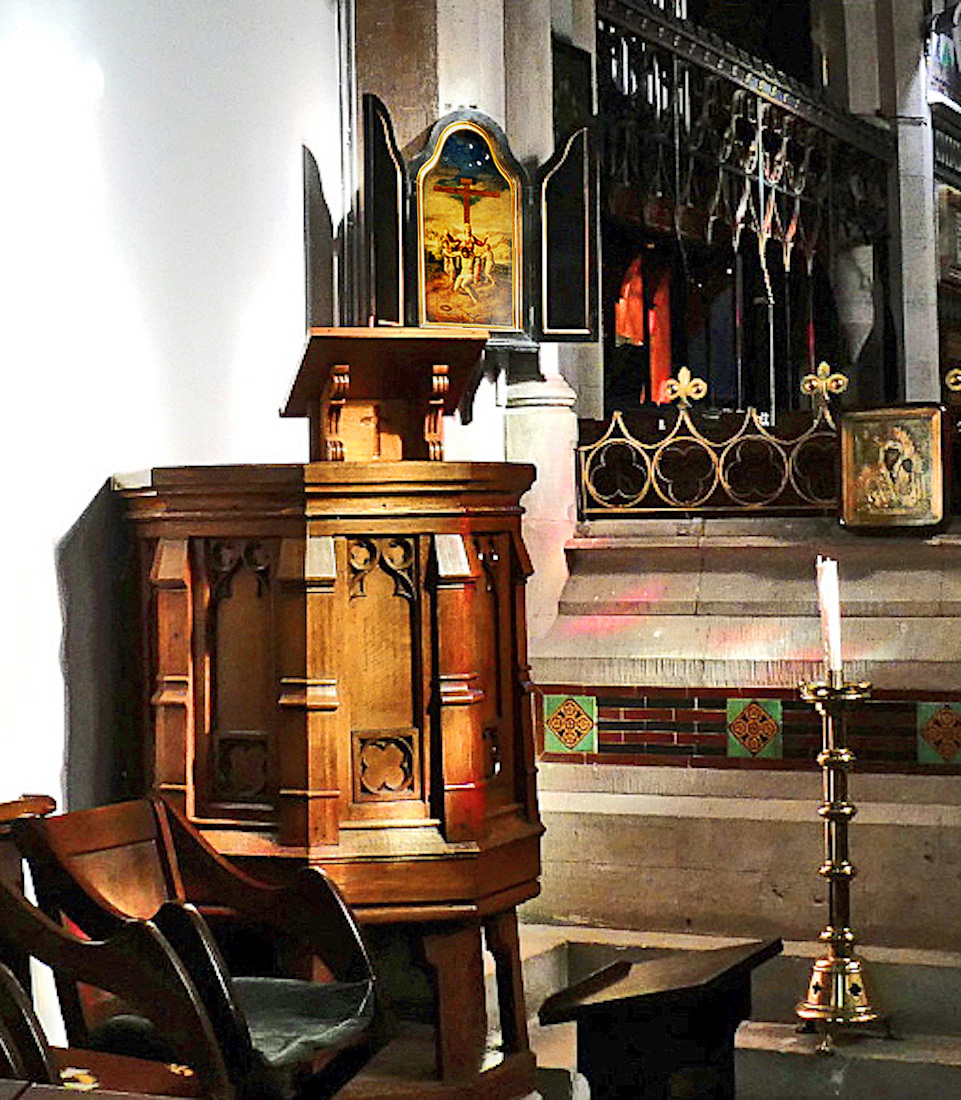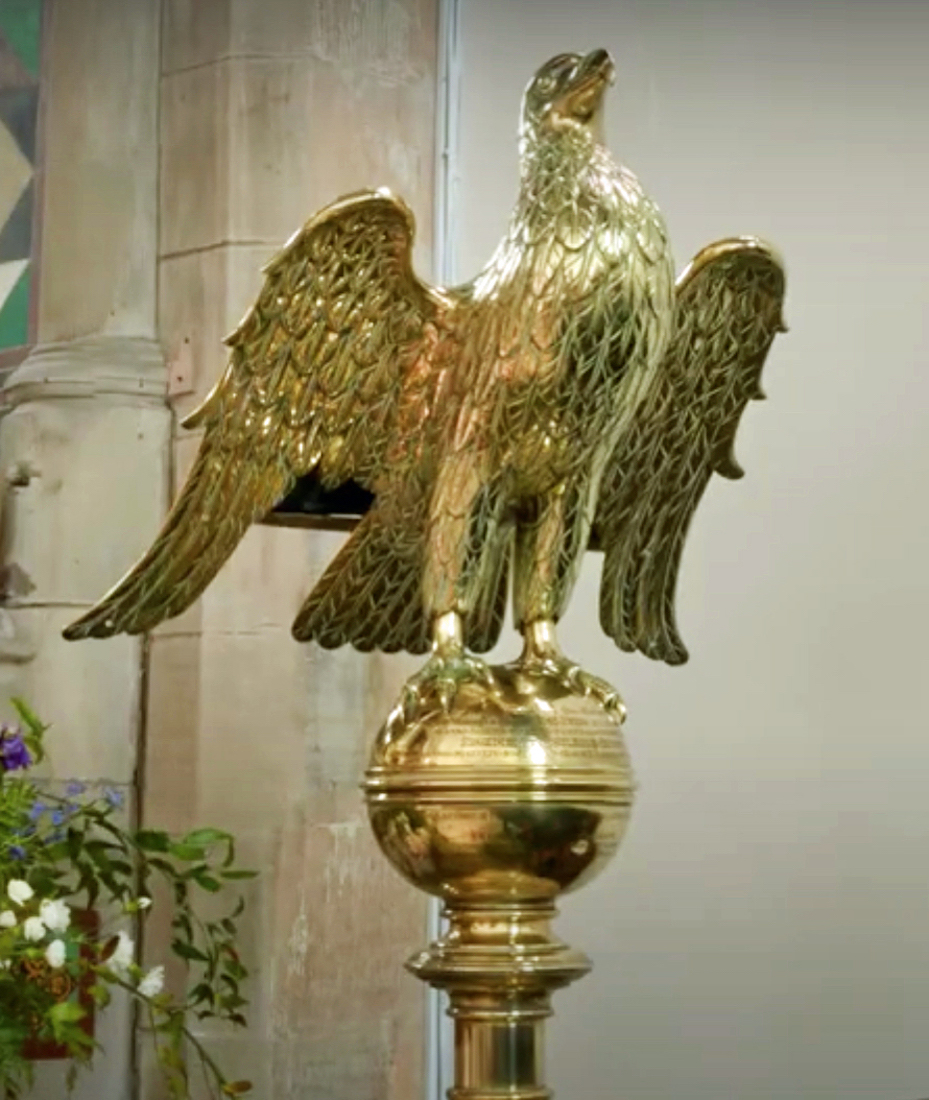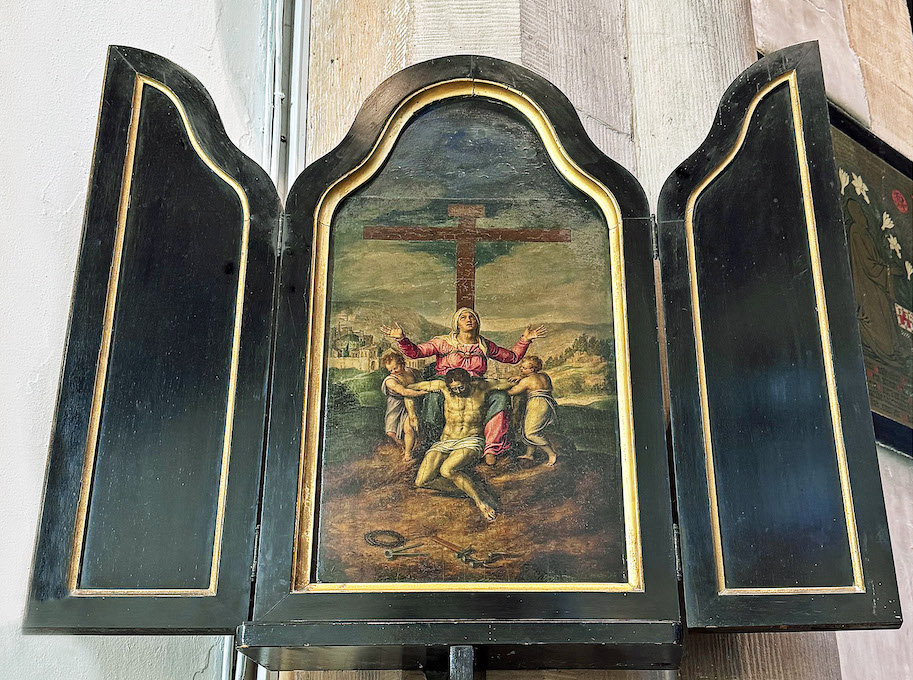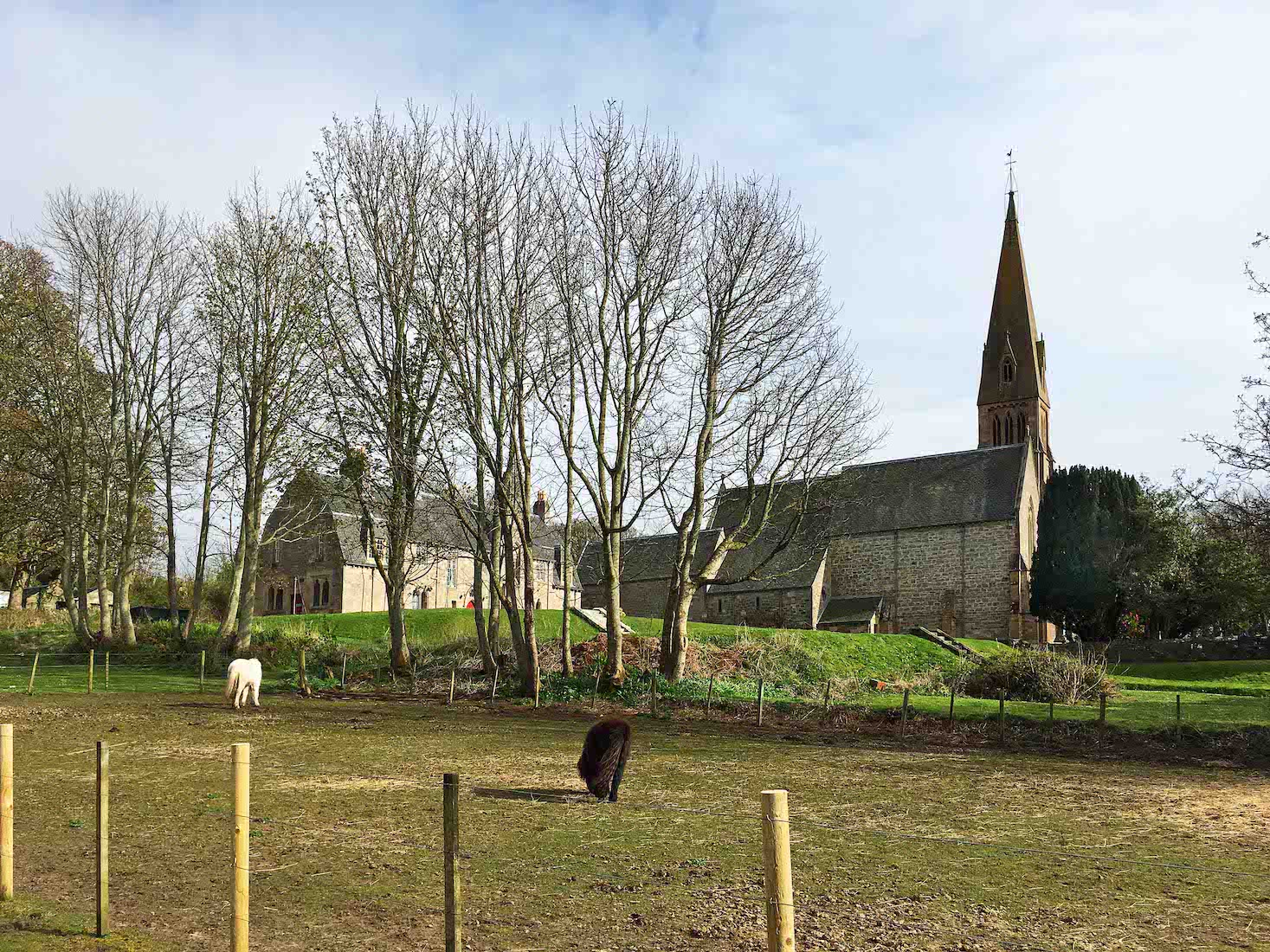
Our viewpoint changes as we move along the North maintenance road towards the College Road entry. INDEX
22. VIEW FROM THE NORTH GATE
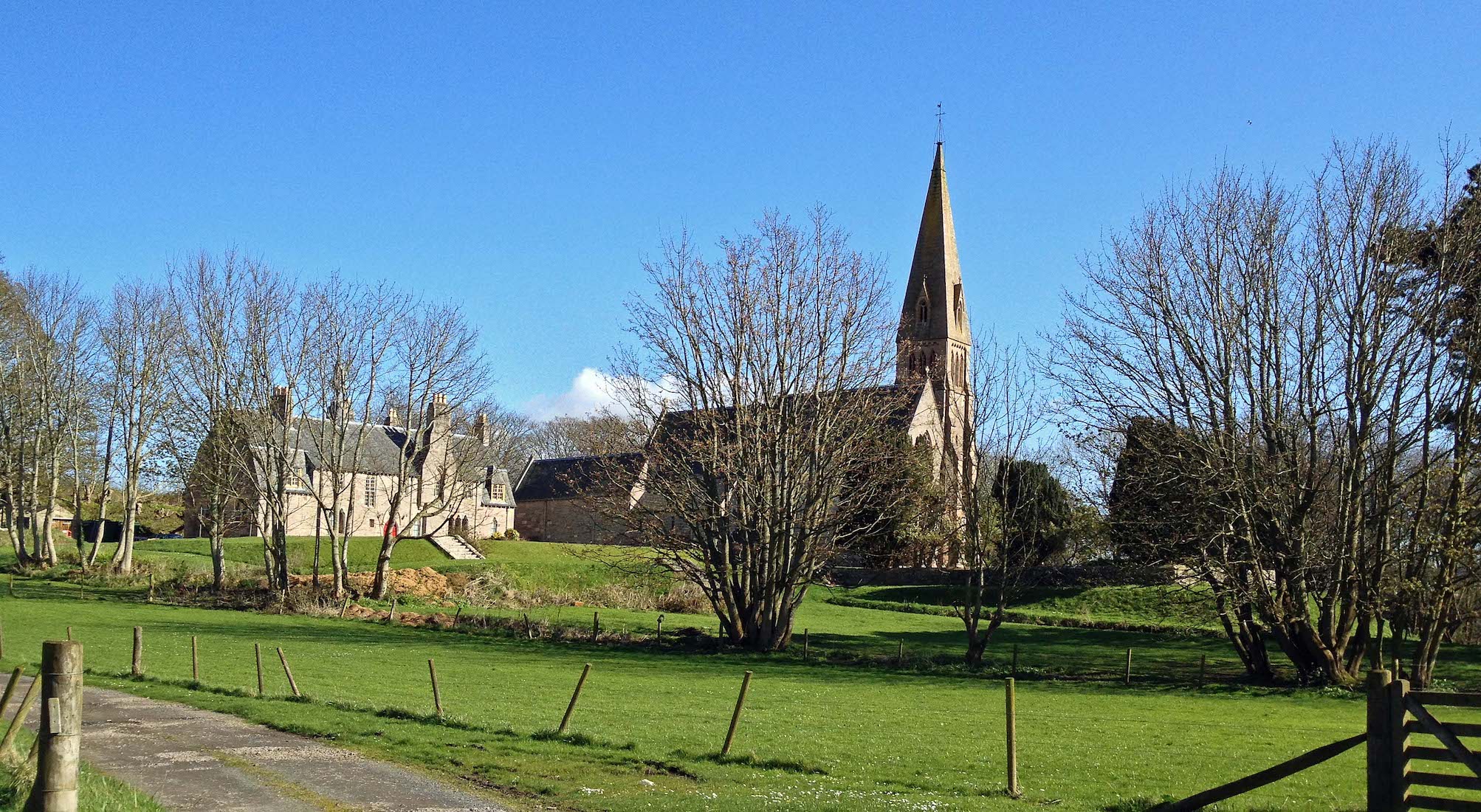
North College and the Cathedral ... in a beautiful setting.
24. CELTIC CROSS FRAGMENTS AND BELLS PLAQUE
In the bottom tower room there is a collection of stone fragments, including portions of old Celtic crosses, found on the island in Victorian times. As well, a brass plaque commemorates a visit of the Princess Royal in 1995 for the recommissioning of the Cathedral bells.
25. NAVE
We enter the nave and turn towards the sanctuary. This Cathedral is remarkably small, with seating for perhaps only a hundred in the nave.
26. ROOD SCREEN
Nave and chancel are separated by the equivalent of a rood screen: a decorated arch with a solid high Cross, which almost exactly bisects the Cathedral interior.
27. NAVE ROOF
The nave roof is attractive, with the white lining contrasting with the dark timber supports. The timber trusses here are unusual with ‘Gothic arch’ framing between the main supports.
28. WEST NAVE
The West end of the nave can be appreciated by standing near the rood screen. Below the tall West window is a memorial cross and plaque. We note too the placing of the baptismal font and Paschal candle. Decorations on the side walls include a reproduction of an old triptych. I am intrigued by the wooden doors above the curtained entry: access to the tower?
29. WEST WINDOW
The West window comprises three almost identical vertical lights, with three quatrefoils at the top. The featured illustrated crosses have an interesting woven construction.
30. WEST NAVE WALL
Here is a closer view of the lower West wall of the nave.
31. MEMORIAL CROSS
The brass Cross is a definite feature of the West wall, and remembers John Gibson Cazeroye DD (died 1896) who was Vice Provost and Provost of this Church and College from 1854 to 1875.
32. FONT
The baptismal font stands at the back of the nave. It has the usual octagonal shape and comes with a wooden cover. The four sides are decorated with carved symbols of the Four Evangelists: an angel (Matthew), a lion (Mark), a bull (Luke) and an eagle (John).
33. PAINTING NEAR FONT
The painting on the South wall near the font is a reproduction of ‘La Crucifixion, 1762’ by Laurent Pécheux (1729 – 1821).
34. TRIPTYCH

Further East along the North wall is a reproduction of this triptych by Jan van Eyck. It is the bottom half of the Ghent Altarpiece – also called Adoration of the Mystic Lamb. The name comes from the central panel showing hordes of pilgrims gathered to pay homage to the Lamb of God. Other panels of the Altarpiece depict the Annunciation, Adam and Eve, the Virgin Mary, John the Baptist and a crowned Christ in detail so exacting that you can pick out individual hairs in a beard, or dirt on a pilgrim’s foot. Artist Jan van Eyck completed the Ghent Altarpiece around 1432. The original has been described as ‘being the size of a barn door, weighing more than an elephant’.
35. NAVE SOUTH WALL
Turning to the North side of the nave we find several brass plates, a small crucifix, and four pairs of high windows.
36. NAVE WINDOWS WEST
The right hand pair of windows comprises four lights, each picturing a saint. From left: •• St Cecelia, a virgin Roman martyr who became the patroness of music and musicians, it being written that, as the musicians played at her wedding, Cecilia ‘sang in her heart to the Lord’. •• St Catherine of Alexandria (also spelt Katherine) was a Christian saint and virgin who was martyred in the early fourth century. Her name is associated with the catherine wheel, but it appears she was actually beheaded. •• St Ignatius of Loyola, was a Spanish Catholic priest and theologian, who, with six companions, founded the religious order of the Society of Jesus (Jesuits), and became its first Superior General, in Paris in 1541. •• St Polycarp was a Christian bishop of Smyrna. According to the Martyrdom of Polycarp, he died a martyr, bound and burned at the stake, then stabbed when the fire failed to consume his body.
37. NAVE WINDOWS EAST
Similarly there are four lights in the Eastern pair of windows, each picturing a saint. •• St Ambrose of Milan was a theologian and statesman who served as Bishop of Milan from 374 to 397. He expressed himself prominently as a public figure, fiercely promoting Roman Christianity against Arianism and paganism. •• St Jerome was an early Christian priest, confessor, theologian, translator, and historian. He is best known for his translation of the Bible into Latin (the translation that became known as the Vulgate) and his commentaries on the whole Bible. •• St Gregory the Great (c 540 – 604) was Bishop of Rome, known for the Gregorian Mission and his many writings. Gregory is one of the Latin Fathers and a Doctor of the Church. •• St Augustine of Hippo is the patron saint of brewers, printers, theologians, and a number of cities and dioceses. His thoughts profoundly influenced the medieval worldview.
38. FRONT NAVE
At the front of the nave, there is a separation of space with the rood screen. Here we find, from left, the pulpit with a triptych above, two Greek icons, and the lectern. There is a dark horizontal strip running across near the base of the wall, with a number of colourful tiles.
39. PULPIT AND LECTERN
The pulpit at left is compact, and fairly standard in design. It is from here that the Christian message is preached week by week. •• The brass eagle lectern at right is good quality: lecterns of this or similar design occur frequently in churches and cathedrals. Traditionally it is from the lectern that passages from the Bible are read. •• Behind the pulpit is an unusual triptych showing Jesus on the ground in front of the Cross supported by cherubs, and with Mary in prayer behind.
40. ICONS
Two Eastern Orthodox icons are attached to the rail of the rood screen. Better quality copies can be seen below. One image is Christ Pantocrator, which is a specific depiction of Christ. Pantocrator or Pantokrator, literally ruler of all, but usually translated as ‘Almighty’ or ‘all-powerful’, is derived from one of many names of God in Judaism. •• The other image is of Mary holding the baby Jesus. This is the late 19th Century Russian icon, Mother of God.



